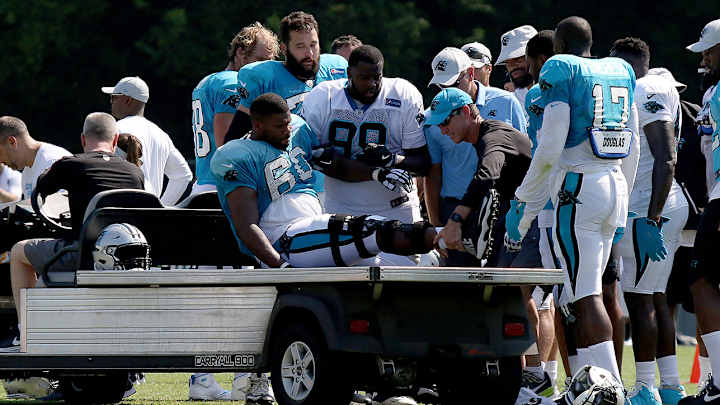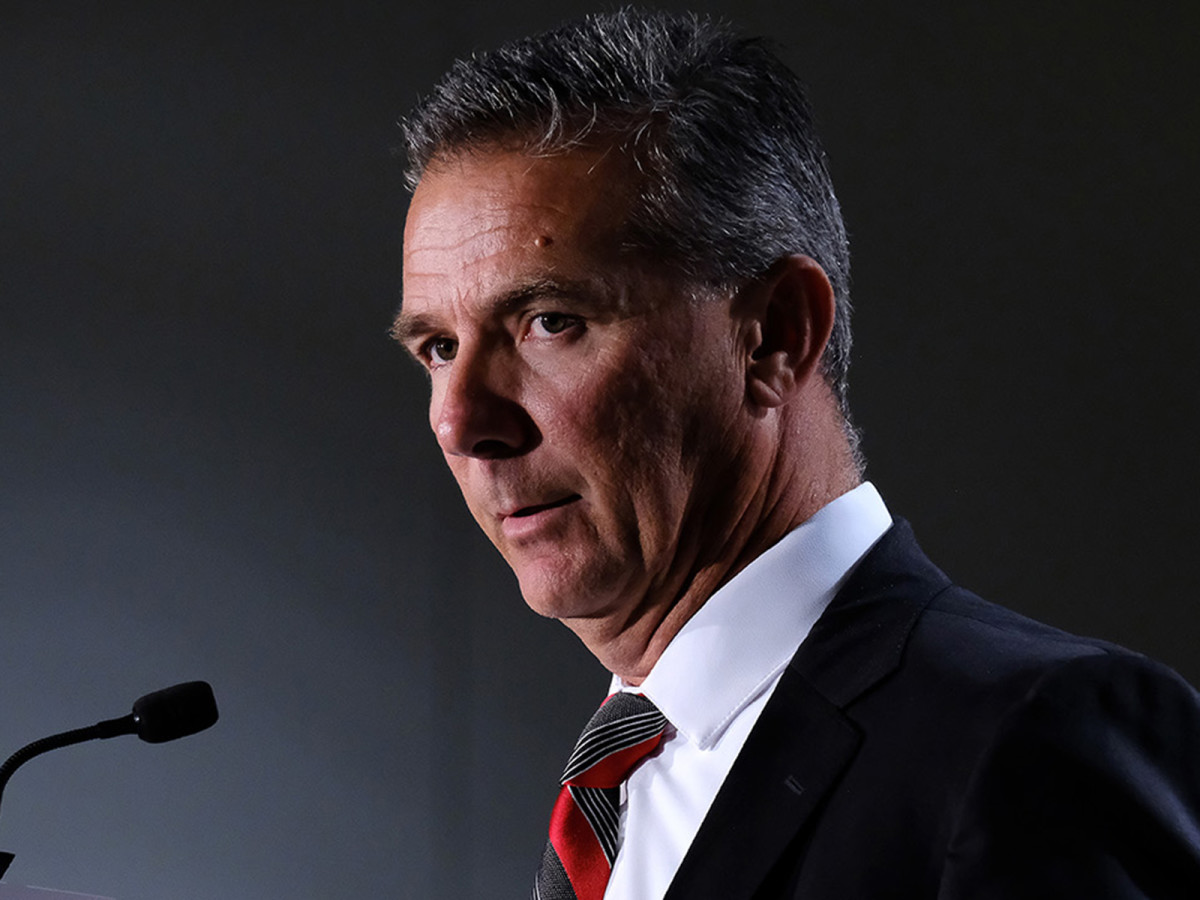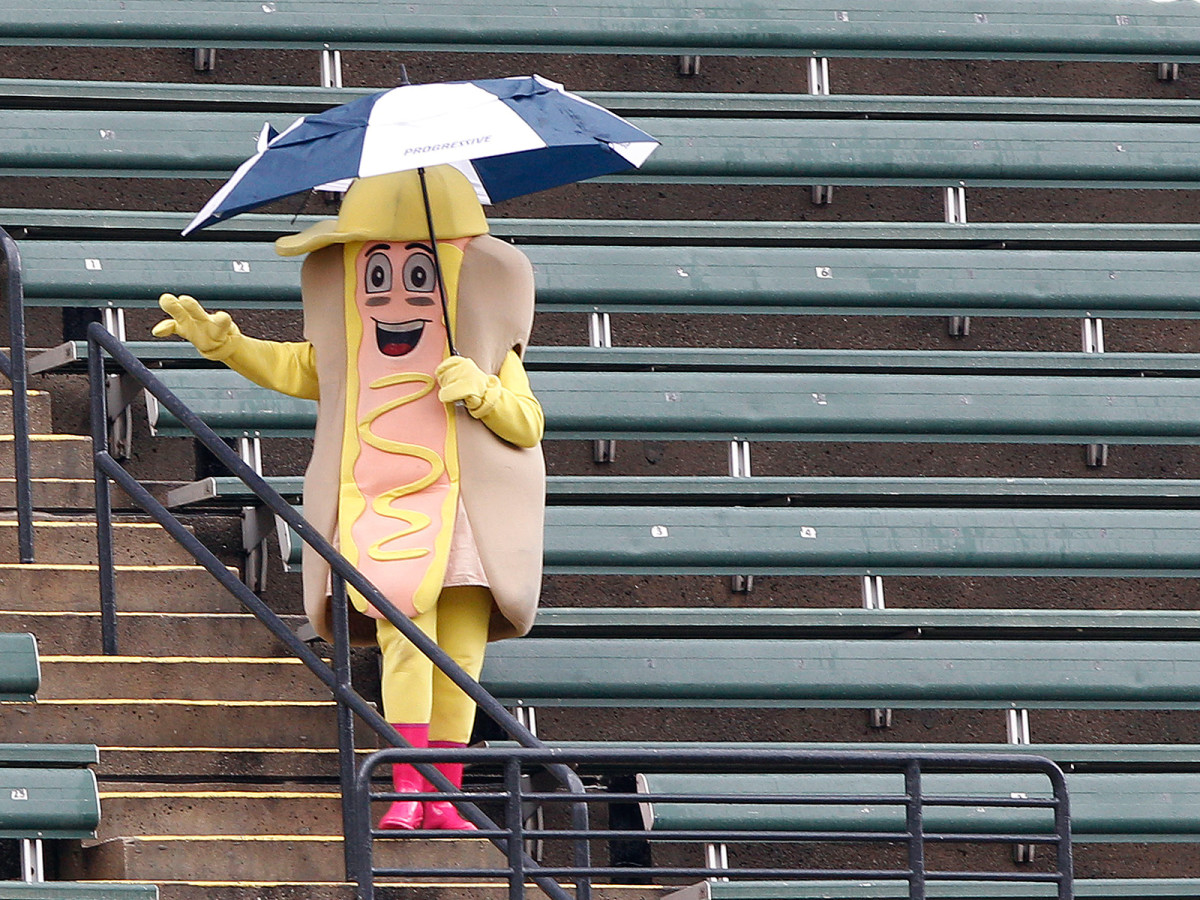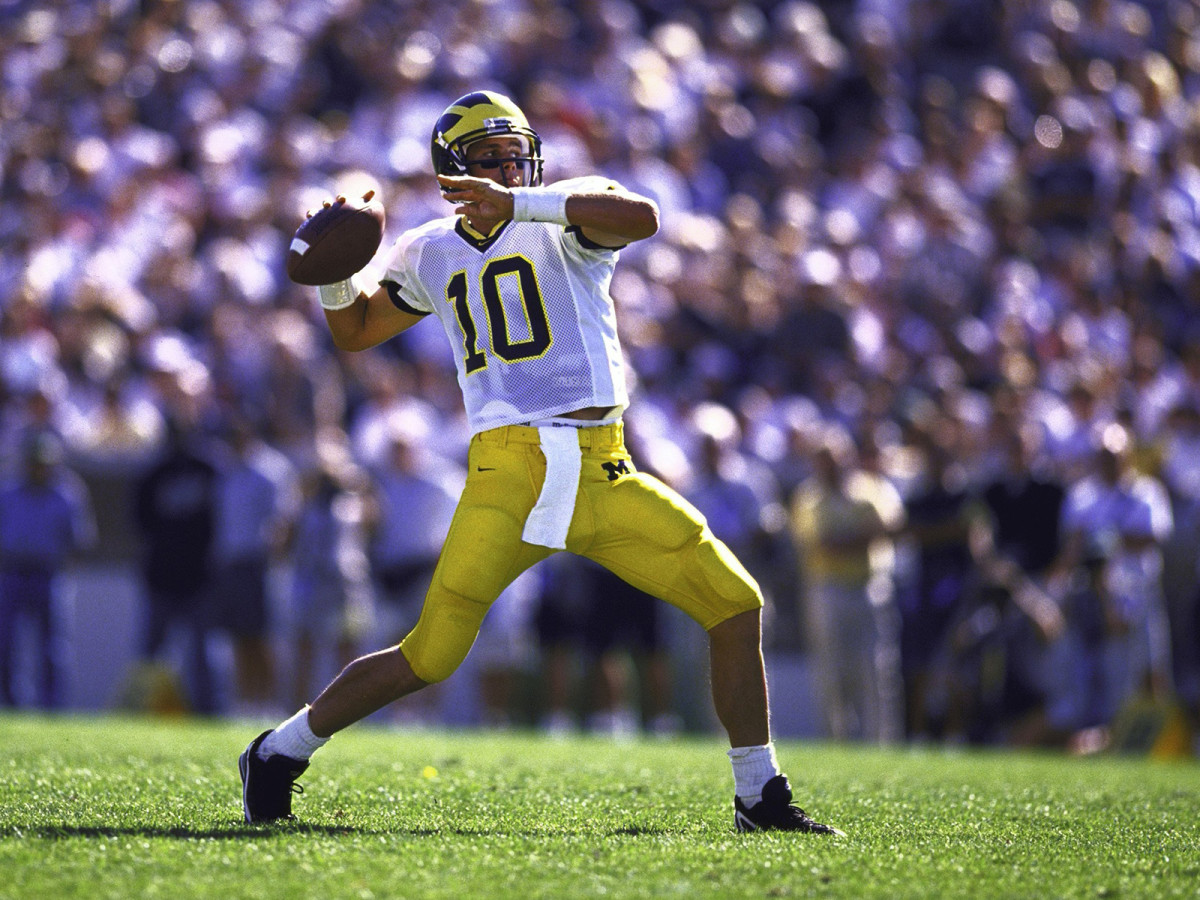Weekend Read: The Dark Side of Training Camp, Cleveland Mustard Wars, Brady's Michigan Days

THE SEASON-ALTERING SIDE OF TRAINING CAMP
It was a steamy late July morning in Spartanburg, S.C., as per usual, and the first training-camp practice in pads for the Carolina Panthers. Fans dotted the hillside overlooking the field, the only shade coming from the thin shadow cast by the light poles. About an hour and a half into practice, agonizing screams pierced the muggy summer air.
Starting right tackle Daryl Williams had been pass blocking in 11-on-11 team drills, when he fell down to the grass, crying out in pain. The entire team went silent and took a knee, while the Panthers athletic trainers rushed to attend to him. A few minutes later, teammates Kawann Short and Trai Turner helped hoist Williams’s 6-foot-6, 330-pound frame onto the cart that would drive him off the field.
Training camp is the most optimistic time of the NFL calendar, when no team has lost a real game yet, and everyone can cling to the possibility of being a contender. But a single moment can be a sobering reminder of the harsh realities of this contact sport. Before Williams even rode off the field, the Panthers shifted the line of scrimmage some 15 yards away, and the offense and defense moved on to the next rep. (Williams later was diagnosed with a dislocated patella and torn MCL in his right knee and will miss significant time.)
These are the moments teams both dread and brace for, because they are inevitable. Packers inside linebacker Jake Ryan and Titans safety Johnathan Cyprien tore their ACLs during the first week of camp. And two days after Williams went down, another similar scene played out in Spartanburg when cornerback Ross Cockrell writhed in pain after getting tangled up with a teammate in the end zone, having fractured both his left tibia and fibula.
Training camp practice rules changed when the current CBA was passed in 2011—fewer and shorter padded practices and more days off—and the trend continues for teams to do less, not more. In White Sulphur Springs, W.Va., where the Texans are practicing at The Greenbrier, the team has cut down the lengths of some of its practice periods. Franchise cornerstones Deshaun Watson and J.J. Watt are both returning from season-ending injuries, and the NFL also cautioned teams about last year’s spike in preseason concussions, traced largely to 11-on-11 team drills in the first two weeks of camp. “We are trying to keep the physicality of practice, but maybe not overcook them with a bunch of reps,” coach Bill O’Brien said, following a full-contact goal-line period with fewer than half the reps as a similar period in last year’s camp.
But season-altering injuries are as much a part of training camp as rookies bringing vets Rita’s Italian Ice in Philadelphia, or Packers players riding kids’ bikes to practice at Lambeau Field, or the Steelers bunking in the dorms at the bucolic Saint Vincent College. The only way to avoid them? Panthers coach Ron Rivera had a blunt answer at a press conference last week. “Not practice,” he said.
RECOMMENDED READING

• Ohio State has not been afraid to fire successful coaches, and Urban Meyer's own high standards put him on uncomfortable ground. (By Andy Staples)
• These are the legal implications of Urban Meyer's situation, including if Ohio State looks to fire its head coach. (By Michael McCann)
• There’s no good moral explanation for the Astros’ trade for Roberto Osuna. Will it ultimately damage the team’s stated mission? (By Ben Reiter)
• CC Sabathia's post-trade dominance with the Brewers will never be forgotten in Milwaukee. Here's how it all went down. (By Jon Tayler)
• In a summer survey, Charles Barkley weighs in on LeBron to L.A., KD’s sensitivity and more. (By Ben Golliver)
MUSTARD WARS: INSIDE THE GREAT DEBATE OVER CLEVELAND’S KING CONDIMENT

By Mark Bechtel
During the Indians' many lean years—in this case we're talking about the 1960s, '70s and '80s—many fans, myself included, had one reason to go to a home game: the hot dogs. The franks themselves were meat of questionable provenance, delivered to you by a vendor who was carting them around in a tub of tepid tap water for who knows how long, and served on a bun so stale that all but the most desperate pigeons would give it a hard pass. So what made them appetizing? They came slathered in a mustard unlike any condiment known to man—brown, vinegary and a little sweet, with an aroma that, for many Clevelanders, has a Proustian effect.
By the 1960s, Joe Bertman had been making the mustard for decades. One of his salesmen, David Dwoskin, obtained the rights to sell it to retailers. But at some point, the two fell out. The two recipes diverged ever so slightly; Dwoskin launched Authentic Stadium Mustard, and suddenly Cleveland was the site of the most unlikely of culinary conflicts: a mustard war.
Chef Michael Symon, a native of suburban North Olmsted, says, "It's hilarious because, at the end of the day, they're both great mustards." But forced to pick a side, Symon says, "Bertman is slightly more acidic, which to me enhances the mustard flavor."
Today, Bertman is sold at Indians games, while Browns games feature Dwoskin's Stadium Mustard. Each side claims supremacy: Stadium Mustard, a favorite of astronaut Don Thomas, has been served in space, while conservative commentator William F. Buckley Jr. once sent out eight cases of Bertman as Christmas presents.
Symon uses Bertman in his barbecue sauce at Mabel's BBQ in Cleveland. "It's also great in glazes," he says. "Say you want to do a roast fish, like a walleye or a salmon; take a little bit of that mustard with some soy sauce and maybe some brown sugar, glaze the fish and put it in the oven."
But the mustards are arguably at their best drowning a piece of grilled meat. Indeed, this is one war with no losers—unless you're one of those schmos stuck with boring mustard. "If someone puts yellow mustard on a hot dog," says Symon, "I'm mortified."
BEST OF THE REST
Editor's note: Below are some of our favorite stories of the week not published by SI. This week's list is curated by Jimmy Traina.
• The Daily Beast’s Jeff Mayshexplores the riveting story of how an ex-cop rigged McDonald’s Monopoly game and stole millions.
• How has ESPN’s long-serving anchor, Bob Ley, managed to thrive in the current media landscape? Bryan Curtis of The Ringer explores.
• If you watched episode three of Showtime’s “Who Is America?”, you’ll want to know how Sacha Baron Cohen managed to participate in an Atlanta rap battle. Devon Ivie of Vulture has the story.
• One of the most hated WWE wrestlers of the ‘80s, Nikolai Volkoff, passed away this week at the age of 70. His New York Times bio by Richard Sandomir is a must-read.
• Scott Cacciola looks at NBA players’obsession with Instagramming their workouts.
• So many TV shows come out of the gate strong, but struggle in Season 2. Vox’s Todd VanDerWerff look at why.
VAULT PHOTO OF THE WEEK: TOM BRADY, MICHIGAN QB

Many football fans—if not Patriots fans—know Tom Brady wasn't nearly the star in college as he is in the NFL. Brady spent only two of his four years at Michigan as the starting quarterback before New England plucked him in the sixth round of the 2000 NFL draft. The picture above depicts Brady slinging a pass against Notre Dame on Sept. 5, 1998, the opening game in his first full season as a starter.
• Get Sports Illustrated’s commemorative Tom Brady 40th birthday issue
At the time of this photo, the Wolverines' QB was a month past his 21st birthday. Fast forward two decades and Brady is turning 41 on Friday, Aug. 3 and entering his 18th season as an NFL starter. Photograph taken by Peter Read Miller.
